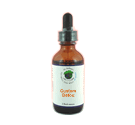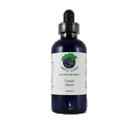 Arthropod/Vector
Bacteria
Chemicals
Fungus /Mold
/ Yeast Metals Parasites Virus Other Arthropod/Vector
Bacteria
Chemicals
Fungus /Mold
/ Yeast Metals Parasites Virus Other
|
MSG
Umami is the taste of glutamate, which is a savory flavor found in many Japanese foods, bacon and also in the toxic food additive MSG, also known as monosodium glutamate. It is because of umami that foods with MSG taste heartier, more robust and generally better to a lot of people than foods without it. The ingredient didn't become widespread in the United States until after World War II, when the U.S. military realized Japanese rations were much tastier than the U.S. versions because of MSG. In 1959, the U.S. Food and Drug Administration labeled MSG as "Generally Recognized as Safe", and it has remained that way ever since. Yet, it was a telling sign when just 10 years later a condition known as "Chinese Restaurant Syndrome" entered the medical literature, describing the numerous side effects, from numbness to heart palpitations, that people experienced after eating MSG. Today that syndrome is more appropriately called "MSG Symptom Complex" which the Food and Drug Administration (FDA) identifies as "short-term reactions" to MSG. MSG is used in Asian cooking as well as canned soups, crackers, meats, salad dressings, soy sauce, gravy, Doritos, Cheetos, frozen dinners and much more. It's found in your local supermarket and restaurants, in your child's school cafeteria and, amazingly, even in baby food and infant formula. Although the FDA continues to claim that consuming MSG in food does not cause these ill effects, many other experts say otherwise. One of the best overviews of the very real dangers of MSG comes from Dr. Russell Blaylock, a board-certified neurosurgeon and author of "Excitotoxins: The Taste that Kills." In it he explains that MSG is an excitotoxin, which means it overexcites your cells to the point of damage or death, causing brain damage to varying degrees. It also potentially triggers or worsens learning disabilities, Alzheimer's disease, Parkinson's disease, Lou Gehrig's disease and more. According to the FDA, MSG Symptom Complex can involve symptoms such as:
Some cooking techniques are better than others for bringing out the "unami" flavor in natural ingredients. Methods such as roasting, stewing and braising help to break down the naturally occurring glutamate in these foods which enhances the unami effect. Searing will also enhance the flavors of meats and fish. Any foods that are aged, fermented or cured tend to have a high unami factor. |
|



